6 Conservation Practices for Forest, Range, and Wildlands
Colby Moorberg
Abbreviations
BMP – Best Management Practice
DOI – US Department of the Interior
ESD – Ecological Site Description
ESI – Ecological Site Inventory
ESIS – Ecological Site Information System
FSGD – Forage Suitability Group Designation
PDF – Portable Document Format
NESH – National Ecological Site Handbook
NRCS – Natural Resources Conservation Service
TVA – Tennessee Valley Authority
US – United States
USDA – US Department of Agriculture
USFWS – US Fish and Wildlife Service
USFS – USDA Forest Service
URL – Universal Resource Locator
Ecological Site Descriptions
Caudle, D., H. Sanchez, J. DiBenedetto, C. Talbot, and M. Karl. 2013. The Interagency Ecological Site Handbook for Rangelands. 110. Washington, DC: The USDA NRCS, USFS, and DOE BLM. http://directives.sc.egov.usda.gov/OpenNonWebContent.aspx?content=33943.wba.
The Interagency Ecological Site Handbook for Rangelands was developed by the BLM, USFS, and USDA NRCS to standardize how to describe and identify rangeland ecological sites to support inventory and how to monitor, evaluate, and manage rangelands in the US. The handbook is extensive, 112 pages in total. It is the preeminent information source for ecological site development. The handbook outlines ecological site classification concepts; classification, differentiation, and descriptions of ecological sites; delineation and mapping of ecological sites; and content of ecological site descriptions.

The Jornada Rangeland Research Programs. 2019. Ecological Site Descriptions Development Resources. https://jornada.nmsu.edu/esd/development-resources.
This web page from the Jornada Rangeland Research Program includes links and downloads for resources useful for developing ecological site descriptions. It includes data forms, methods, and additional resources useful for developing ecological site descriptions.
USDA NRCS. 2019a. Ecological Sites. https://www.nrcs.usda.gov/wps/portal/nrcs/detail/national/landuse/rangepasture/?cid=stelprdb1068392.
This web page provides a concise summary of ecological sites and related concepts. On this page, the USDA NRCS defines ecological sites as “the basic component of a land-type classification system that describes ecological potential and ecosystem dynamics of land areas.” The page includes further information on the background of ecological sites, forage suitability groups, soils and ecological sites, and state and transition models. Links to associated web pages are included throughout. The URL offers a direct download of a PDF of this resource.
USDA NRCS. 2019b. Ecological Site Information System. https://esis.sc.egov.usda.gov/.
This web page provides links to and short descriptions of the primary tools associated with ecological sites. These include the ESIS, the ESD database, FSGD, ESI, the Interagency Ecological Site Handbook for Rangelands, and the NESH.
Forestry Best Management Practices
Aber, J., N. Christensen, I. Fernandez, J. Franklin, L. Hidinger, M. Hunter, J. MacMahon, D. Mladenoff, J. Pastor, D. Perry, R. Slangen, and H. van Miegroet. 2000. Applying Ecological Principles to Management of the U.S. National Forests. Issues in Ecology (Number 6). https://www.esa.org/wp-content/uploads/2013/03/issue61.pdf.
Issues in Ecology reports the consensus of panels of scientific experts on environmental issues in language understandable by non-scientists. This issue presents the ecological principles that the authors think should be incorporated into management plans for US National Forests. The highlighted ecological concepts include soil and nutrient cycles, hydrology, biodiversity, landscape-level issues, global change, policy analysis assumptions, and what we know about forest ecosystems, natural stand dynamics, substituting silviculture for natural forest processes, and the ecological role of timber harvesting. The URL offers a direct download of a PDF of this resource.
US EPA Office of Water. 2019b, February 19. Forestry Best Management Practices in Watersheds. https://cfpub.epa.gov/watertrain/moduleFrame.cfm?module_id=34&parent_object_id=1517&object_id=1517.
Issues in Ecology reports the consensus of panels of scientific experts on environmental issues in language understandable by non-scientists. This issue presents the ecological principles that the authors think should be incorporated into management plans for US National Forests. The highlighted ecological concepts include soil and nutrient cycles, hydrology, biodiversity, landscape-level issues, global change, policy analysis assumptions, and what we know about forest ecosystems, natural stand dynamics, substituting silviculture for natural forest processes, and the ecological role of timber harvesting. The URL offers a direct download of a PDF of this resource.
USDA Forest Service. 2012. National Core BMP Technical Guide. Washington, D.C.: USDA Forest Service. https://www.fs.fed.us/naturalresources/watershed/bmp.shtml#TechGuideV2.
This publication provides general descriptions of best management practices. It is split into three parts: 1) introduction, 2) managing water quality on national forest system lands, and 3) national core BMPs. The third section is the most extensive, providing concise information about each practice. While the technical guide is extensive, the breadth of information for many BMPs makes it a useful reference for implementing conservation practices.
Firebreak
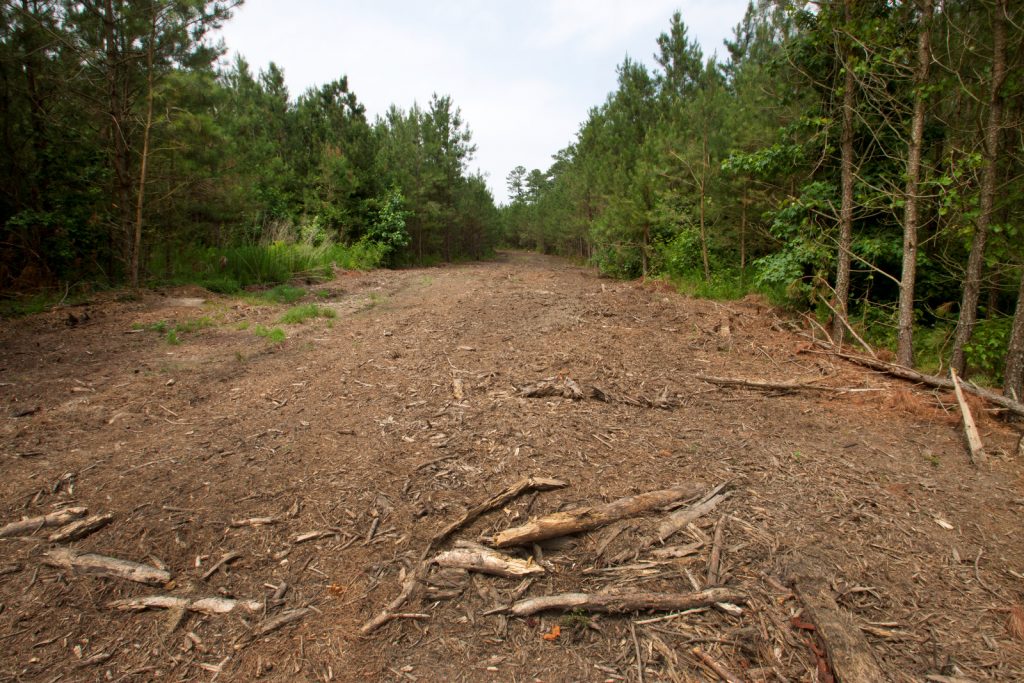
USDA NRCS. 2010. Firebreak. Conservation Practice Standard 394. 2. Washington, D.C.: USDA NRCS. https://www.nrcs.usda.gov/Internet/FSE_DOCUMENTS/nrcs143_026527.pdf.
In this conservation practice standard, the USDA NRCS defines a firebreak as a strip of bare or vegetated land that reduces the spread of wildfire or contains prescribed burns. The standard outlines criteria and considerations for implementing the practice, plans and specifications, and operation and maintenance. The URL offers a direct download of a PDF of this resource.
USDA NRCS. 2012. Firebreak. Conservation Practice Standard Overview 394. 1. Washington, D.C.: USDA NRCS. https://www.nrcs.usda.gov/Internet/FSE_DOCUMENTS/stelprdb1255035.pdf.
This conservation practice standard overview provides a concise summary of firebreaks, including a definition, a general description of when they should be built, general considerations, and a list of associated conservation practices. The overview also includes an image of a firebreak containing a fire along a road used as a firebreak. Commonly associated practices are listed, including prescribed burning, forest trails and landings, forest stand improvement, and tree and shrub planting. The URL offers a direct download of a PDF of this resource.
Weir, J. R., T. G. Bidwell, R. Stevens, and J. Mustain. 2017. Firebreaks for Prescribed Burning. NREM-2890. Stillwater, OK: Oklahoma Cooperative Extension Service. http://factsheets.okstate.edu/documents/nrem-2890-firebreaks-for-prescribed-burning/.
This extension bulletin several different types of firebreaks: natural firebreaks like bluffs, creeks, rivers, and lakes; existing firebreaks like cultivated fields and roads; and constructed firebreaks that are scraped, disked, or hand lines and mowed or watered lines. The bulletin also highlights other considerations such as firebreak width, brush piles, preventing erosion, and additional resources.
Forest Trails and Landings
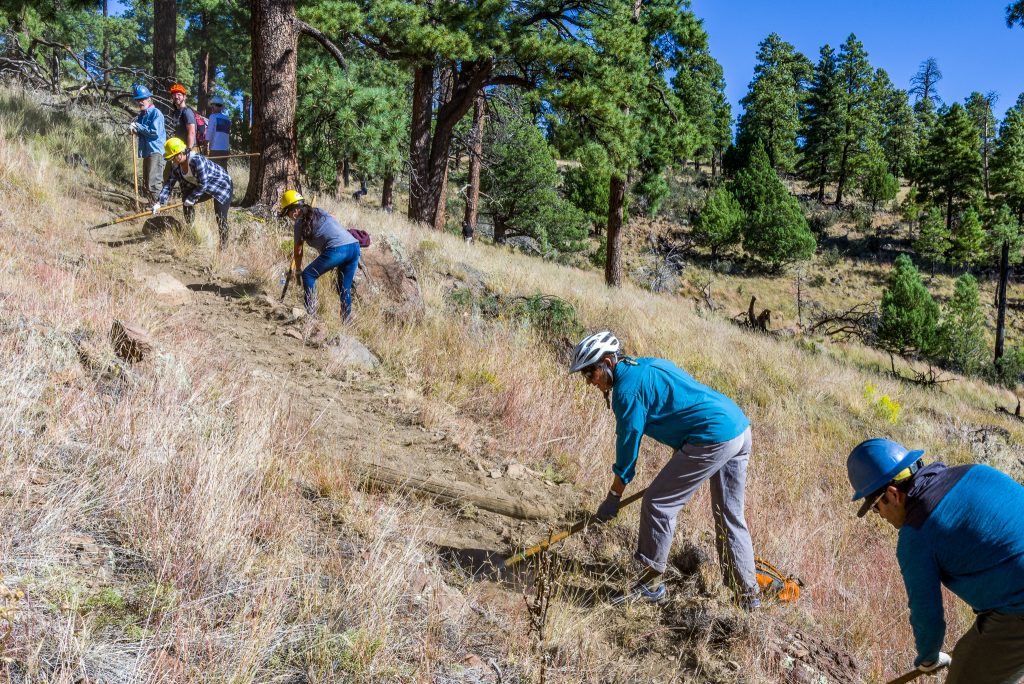
Bardon, R., L. Harkins, and M. Megalos. 2003. Recreational Forest Trails: Plan for Success. 12. Raleigh, NC: North Carolina Cooperative Extension Service. https://content.ces.ncsu.edu/recreational-forest-trails-plan-for-success.
This extension bulletin from North Carolina State University describes BMPs for recreational trails, including types of trails, studying the land, trail design and construction, trail specifications, designing for accessibility, and construction tips. It contains many useful hand-drawn diagrams and easy-to-understand tables and lists.
USDA NRCS. 2017. Forest Trails and Landings. Conservation Practice Standard 655. 2. Washington, D.C.: USDA NRCS. https://www.nrcs.usda.gov/wps/PA_NRCSConsumption/download?cid=nrcs143_026503&ext=pdf
In this conservation practice standard the USDA NRCS defines forest trails and landings as a temporary or infrequently used cleared area, path, or route. These trails are for travel by people or equipment or for periodic access for removing and collecting forest products. The standard covers general criteria for trails and landings, considerations, plans and specifications, and operation and maintenance. The URL offers a direct download of a PDF of this resource.
USDA NRCS. 2012. Forest Trails and Landings. Conservation Practice Standard Overview 655. 1. Washington, D.C.: USDA NRCS. https://www.nrcs.usda.gov/Internet/FSE_DOCUMENTS/stelprdb1255216.pdf.
In this conservation standard practice overview, the USDA NRCS defines forest trails and landings. Information about the practice is provided, including general criteria, specifications, and a list of commonly associated conservation practices. A picture of a forest soil is provided. Practices include access roads, critical area plantings, firebreaks, forest stand improvement, and more. The URL offers a direct download of a PDF of this resource.
Fuel Break
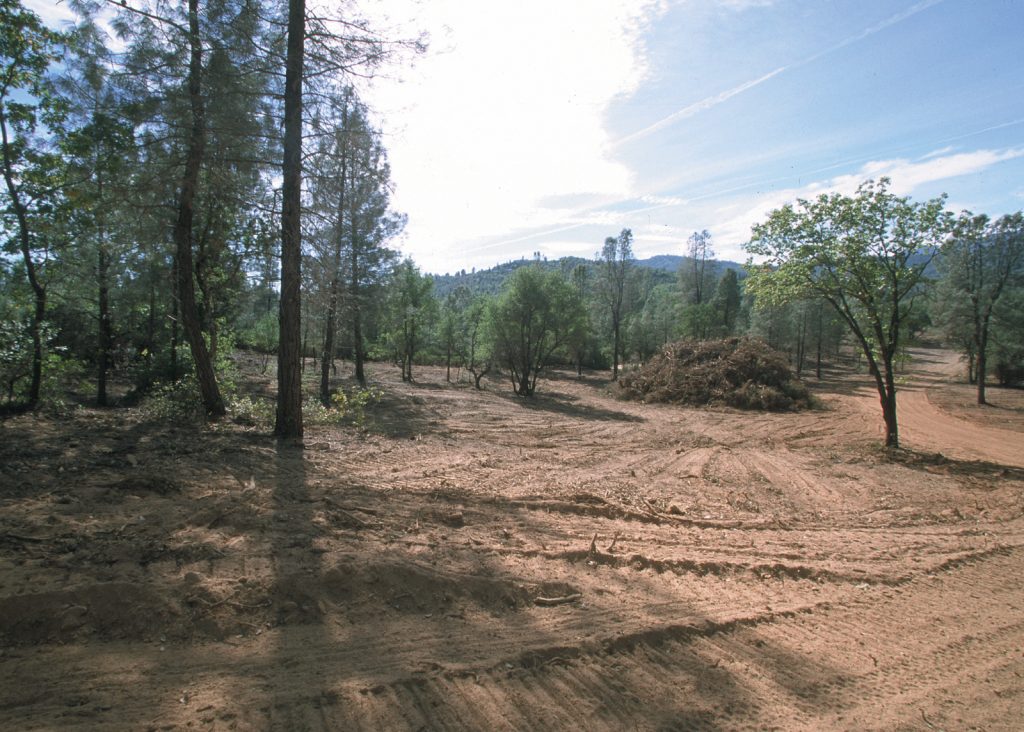
Bennett, M., S. A. Fitzgerald, B. Parker, M. Main, A. Perleberg, C. C. Schnepf, and R. Mahoney. 2010. Chapter 4: Firebreaks and Shaded Fuelbreaks. In Reducing Fire Risk on Your Forest Property, 13–15. Corvallis, Oregon: Oregon State University, University of Idaho, Washington State University. https://catalog.extension.oregonstate.edu/pnw618.
This chapter from the Reducing Fire Risk on Your Property outlines general guidelines for firebreaks and shaded fuel breaks. The three-page chapter highlights the pros and cons of firebreaks and fuel breaks (or “fuelbreaks” as it is spelled in this publication). Several useful figures and photographs illustrate how to create firebreaks and fuel breaks near roads and structures. The link is to the web page for the book, Reducing Fire Risk on Your Property, where a link is provided to download a PDF of the chapter.
USDA NRCS. 2005. Fuel Break. Conservation Practice Standard 383. 2. Washington, D.C.: USDA NRCS. https://www.nrcs.usda.gov/Internet/FSE_DOCUMENTS/nrcs143_026161.pdf.
In this conservation practice standard, the USDA NRCS defines fuel breaks as land on which vegetation, debris, or detritus has been modified or reduced to control or reduce the spread of fire. The standard covers the purpose of the practice, conditions where it applies, considerations, plans and specifications, and operation and maintenance. The URL offers a direct download of a PDF of this resource.
USDA NRCS. 2012. Fuel Break. Conservation Standard Practice Overview 383. 1. Washington, D.C.: USDA NRCS. https://www.nrcs.usda.gov/Internet/FSE_DOCUMENTS/stelprdb1255017.pdf.
In this conservation practice standard overview, the USDA NRCS defines a fuel break and briefly describes where the practice is applied and other general considerations. A list of commonly associated practices is included: firebreaks, access roads, and forest trails and landings, as well as other practices associated with erosion control, grazing, and habitat management. The URL offers a direct download of a PDF of this resource.
Tree/Shrub Site Preparation

Self, A. B., and J. D. Kushla. 2016. Mechanical Site Preparation for Forestry in Mississippi. P3006. 8. Starkville, MS: Mississippi State University Extension Service. https://extension.msstate.edu/publications/publications/mechanical-site-preparation-for-forestry-mississippi.
This extension bulletin from the Mississippi State University Extension Service outlines the many mechanic site preparation operations needed prior to planting new trees. The emphasis is silviculture, but the practices mentioned can also be applied to other contexts. Covered topics include soil resources, mowing, shearing, chopping, disking, subsoiling, bedding, and combination plowing. Each practice is accompanied by an example figure.
USDA NRCS. 2006. Tree/Shrub Site Preparation. Conservation Practice Standard 490. 1. Washington, D.C.: USDA. https://www.nrcs.usda.gov/Internet/FSE_DOCUMENTS/nrcs143_025998.pdf.
This conservation practice standard from the USDA NRCS begins by defining tree/shrub site preparation as treatment to improve site conditions for establishing trees and shrubs. The standard also includes information on the purpose of the practice, conditions where it applies, general criteria for implementing the practice, plans and specifications, and operation and maintenance. The URL offers a direct download of a PDF of this resource.
USDA NRCS. 2012. Tree/Shrub Site Preparation. Conservation Practice Standard Overview 490. 1. Washington, D.C.: USDA. https://www.nrcs.usda.gov/Internet/FSE_DOCUMENTS/stelprdb1255112.pdf.
This conservation practice standard overview includes a definition of tree/shrub site preparation along with general information about the practice and additional considerations. It also includes a list of commonly associated practices: tree/shrub establishment, woody residue treatment, upland wildlife habitat management, and windbreak/shelterbelt establishment. The URL offers a direct download of a PDF of this resource.
Tree/Shrub Establishment
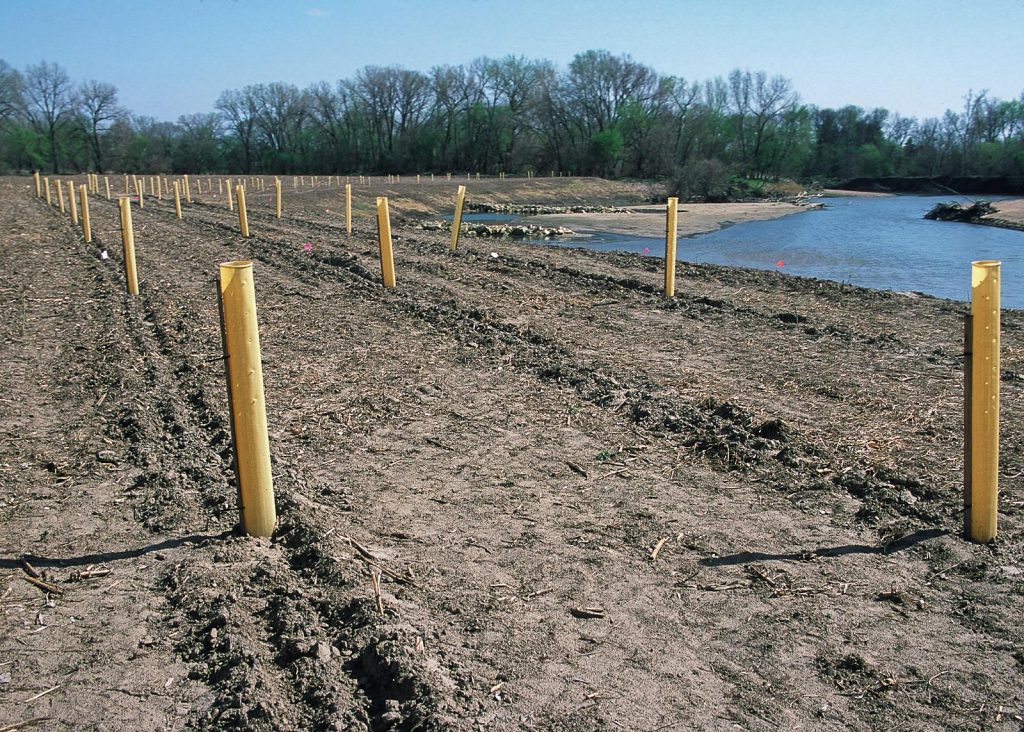
Klempa, J. D. 2012. Tree Planting Guide. L596. 8. Manhattan, KS: Kansas State University Agricultural Experiment Station and Cooperative Extension Service. https://www.bookstore.ksre.ksu.edu/Item.aspx?catId=464&pubId=388.
This tree planting guide from the Kansas Forest Service outlines many considerations for planting conservation trees. Those include ordering conservation trees, planting time, care before planting, how to plant (hand planting, machine planting, and seed planting), and fencing. Many useful figures are included for each major concept.
USDA NRCS. 2016a. Tree/Shrub Establishment. Conservation Practice Standard 612. 5. Washington, D.C.: USDA NRCS. https://www.nrcs.usda.gov/wps/PA_NRCSConsumption/download?cid=stelprdb1255192&ext=pdf.
This conservation practice standard from the USDA NRCS defines tree/shrub establishment as the establishment of woody plants through natural regeneration or by planting cuttings, seedlings, or directly seeding. The standard outlines the purpose of tree/shrub establishment, describes conditions where it applies, criteria for implementing the practice, general considerations, plans and specifications, and operation and maintenance. Additional references are provided. The URL offers a direct download of a PDF of this resource.
USDA NRCS. 2016b. Tree/Shrub Establishment. Conservation Practice Standard Overview 612. 1. Washington, D.C.: USDA NRCS. https://www.nrcs.usda.gov/Internet/FSE_DOCUMENTS/nrcs143_026460.pdf.
This conservation practice standard overview for tree/shrub establishment includes a definition of the practice, along with general information for tree/shrub establishment. A list of commonly associated practices is provided, which includes tree/shrub site preparation, mulching, forest trails and landings, upland wildlife habitat management, and critical area planting, among others. The URL offers a direct download of a PDF of this resource.
Woody Residue Treatment
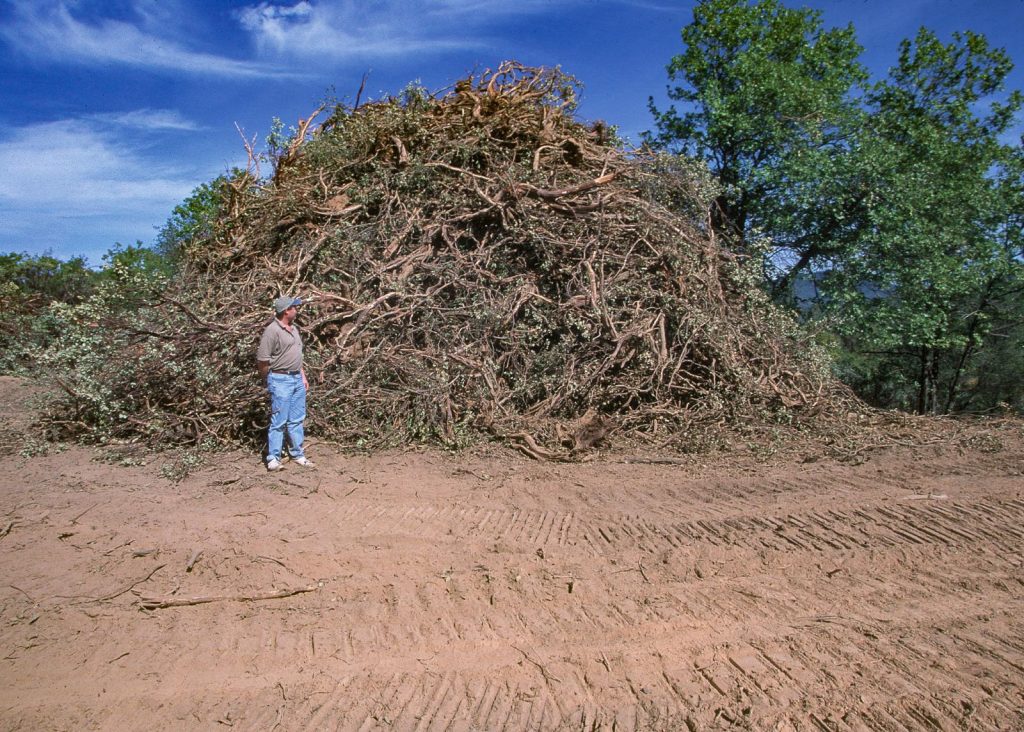
Schnepf, C. C., R. T. Graham, S. Kegley, and T. B. Jain. 2009. Managing Organic Debris for Forest Health. 66. Moscow, ID: University of Idaho, Oregon State University, Washington State University. https://catalog.extension.oregonstate.edu/pnw609.
This Pacific Northwest Extension bulletin provides detailed information on managing organic debris. Information is presented on the impact of organic debris on inland northwest forest soils, management objectives for organic debris, strategies for managing fire, strategies for managing bark beetles, and strategies for managing wildlife. The bulletin is extensive but contains many useful figures and tables.
USDA NRCS. 2017a. Woody Residue Treatment. Conservation Practice Standard 384. 3. Washington, D.C.: USDA. https://www.nrcs.usda.gov/wps/PA_NRCSConsumption/download?cid=stelprdb1255018&ext=pdf.
In this USDA NRCS conservation practice standard, woody residue treatment is defined as treatment of woody residue created during natural disturbances or management activities. The standard also includes information on the purposes of the practice, conditions where it applies, criteria for its application, general considerations, plans and specifications, and operation and maintenance. The URL offers a direct download of a PDF of this resource.
USDA NRCS. 2017b. Woody Residue Treatment. Conservation Practice Standard Overview 384. 1. Washington, D.C.: USDA. https://www.nrcs.usda.gov/wps/PA_NRCSConsumption/download?cid=nrcseprd1365411&ext=pdf.
In this conservation practice standard overview, the USDA NRCS defines woody residue treatment and provides general considerations for applying the practice. A list of commonly associated practices is provided and includes access control, critical area planting, firebreak forest stand improvement, integrated pest management, and prescribed burning. The URL offers a direct download of a PDF of this resource.
Rangeland Management and Conservation
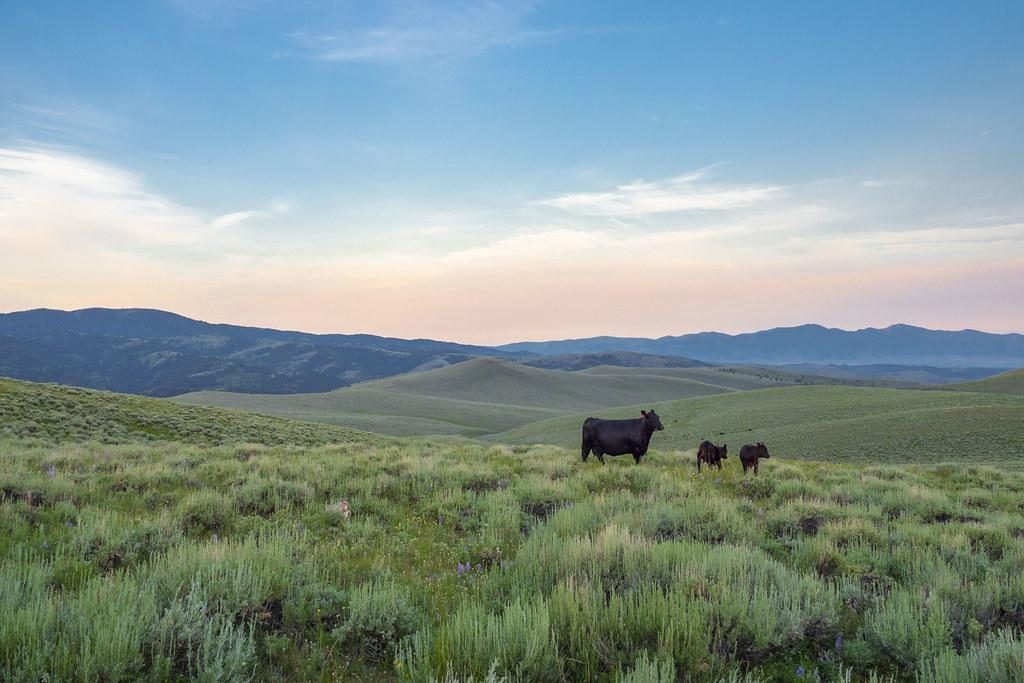
Briske, D. D., ed. 2011. Conservation Benefits of Rangeland Practices: Assessment, Recommendations, and Knowledge Gaps. Washington, D.C.: USDA NRCS. https://www.nrcs.usda.gov/wps/portal/nrcs/detail/national/technical/nra/ceap/?&cid=stelprdb1045811.
This book from the USDA NRCS summarizes the findings from the Conservation Effects Assessment Project (CEAP) for rangeland. The URL links to a website with direct downloads to a standalone executive summary, as well as each chapter of the report. Practices discussed include prescribed fire, brush management, range planting, riparian management, impact of rangeland activities on wildlife, invasive plant management, landscape approaches to rangeland conservation practices, and social and economic assessment of rangeland conservation practices.
Butler, L., J. Cropper, R. Johnson, A. Norman, G. Peacock, P. Shaver, and K. Spaeth. 2003. National Range and Pasture Handbook. Fort Worth, Texas: USDA NRCS Grazing Lands Technology Institute. https://www.nrcs.usda.gov/wps/portal/nrcs/detail/national/landuse/rangepasture/?cid=stelprdb1043084.
The National Range and Pasture Handbook provides procedures to support inventory, analysis, treatment, and management of grazing land resources to comply with USDA NRCS policy. The handbook includes information on grazing land resources, grazing land ecological sites and forage suitability groups, inventorying and monitoring resources, land management, animal nutrition, hydrology, wildlife management, enterprise diversification, economics, and conservation planning.
USDA NRCS. 2008. Forage Suitability Group Descriptions Fact Sheet. Washington, D.C.: USDA NRCS. https://www.nrcs.usda.gov/Internet/FSE_DOCUMENTS/stelprdb1043493.pdf.
This USDA NRCS fact sheet defines forage suitability groups as soil map unit components having similar potentials and limitations for forage production. The fact sheet also describes the importance of forage suitability groups and features of these groups.
USDA NRCS. 2019. Range & Pasture. https://www.nrcs.usda.gov/wps/portal/nrcs/main/national/landuse/rangepasture/.
The USDA NRCS range and pasture web page provides links to many related resources. It first defines range and pasture lands, then provides links to resources associated with ecological sites, forage suitability groups, technical references, and the National Grazing Lands Coalition.
Prescribed Grazing
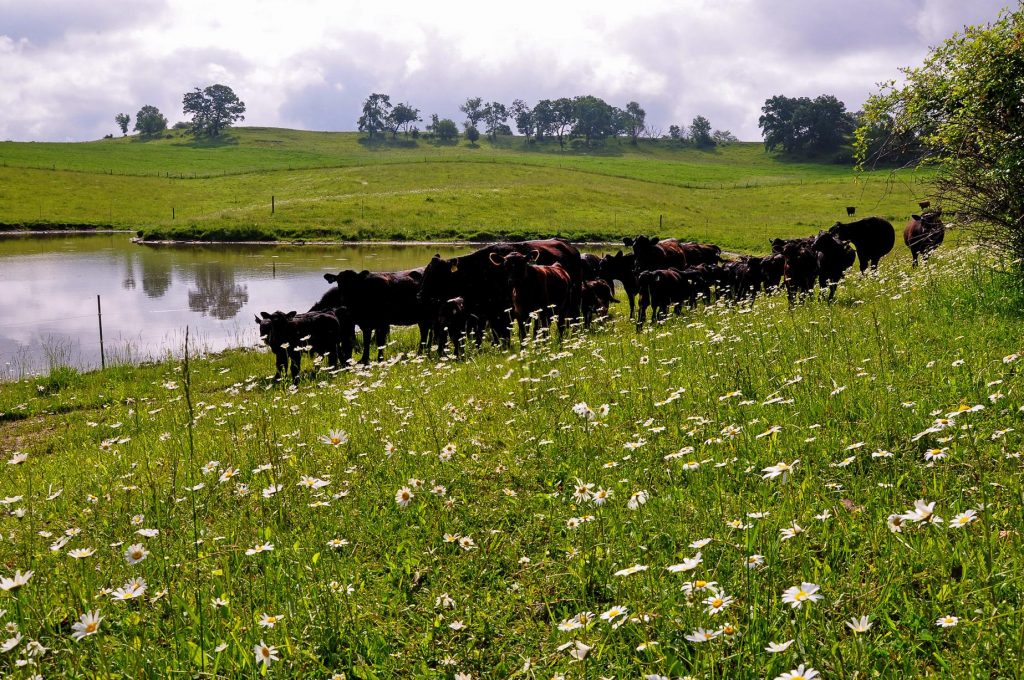
USDA NRCS. 2017b. Prescribed Grazing. Conservation Practice Standard 538. 6. Washington, D.C.: USDA. https://www.nrcs.usda.gov/Internet/FSE_DOCUMENTS/stelprdb1255132.pdf.
In this conservation practice standard, the USDA NRCS defines prescribed grazing as managing the grazing and/or browsing of animals to comply with management, economic, or ecological objectives. The standard outlines purposes of the conservation practice, criteria for implementation, general considerations, plans and specifications, and operation and maintenance. No conservation practice standard overview is currently available for this practice. The URL offers a direct download of a PDF of this resource.
USFWS. 2009, February 18. Managing Invasive Pests – Management Methods: Prescribed Grazing. https://www.fws.gov/invasives/staffTrainingModule/methods/grazing/introduction.html.
This US Fish and Wildlife Service learning module provides a concise summary of prescribed grazing, followed by ways to test knowledge after completing the module. It has four parts: Introduction, Impacts, In Practice, and Review and Resource.
Prescribed Burning

Ohlenbusch, P. D., and D. C. Hartnett. 2000. Prescribed Burning as a Management Practice. L-815. 8. Manhattan, KS: Kansas State University Agricultural Experiment Station and Cooperative Extension Service. https://www.bookstore.ksre.ksu.edu/Item.aspx?catId=226&pubId=428.
This extension bulletin from Kansas State Research and Extension highlights various aspects and considerations for the use of prescription burns as a management practice on rangeland. Topics covered include benefits of prescribed burning, timing, forage yield, grazing distribution, livestock production, weed and brush management, wildlife, native grass, and wildfire hazard reduction. It also discusses effects on soil conditions and air quality.
USDA NRCS. 2010. Prescribed Burning. Conservation Practice Standard 338. 2. Washington, D.C.: USDA. https://www.nrcs.usda.gov/Internet/FSE_DOCUMENTS/nrcs143_026544.pdf.
In this USDA NRCS conservation practice standard, prescribed burning is defined as “controlled fire applied to a predetermined area”. The standard outlines the purposes of prescribed burning, criteria for its implementation, considerations, plans and specifications, and operation and maintenance. The URL offers a direct download of a PDF of this resource.
USDA NRCS. 2012. Prescribed Burning. Conservation Practice Standard Overview 338. 1. Washington, D.C.: USDA. https://www.nrcs.usda.gov/Internet/FSE_DOCUMENTS/stelprdb1254966.pdf.
In this conservation practice standard overview, the USDA NRCS defines prescribed burning, and provides a concise description of the practice and considerations for implementation. A list of associated conservation practices is provided, including forest stand improvement, forest trails and landings, range planting, and integrated pest management. The URL offers a direct download of a PDF of this resource.
USFWS. 2009. Managing Invasive Pests – Management Methods: Prescribed Burning. https://www.fws.gov/invasives/staffTrainingModule/methods/burning/introduction.html.
This US Fish and Wildlife Service learning module provides a concise summary of prescribed burning, followed by ways to test knowledge after completing the module. It has four parts: Introduction, Impacts, In Practice, and Review and Resource.
Brush Management
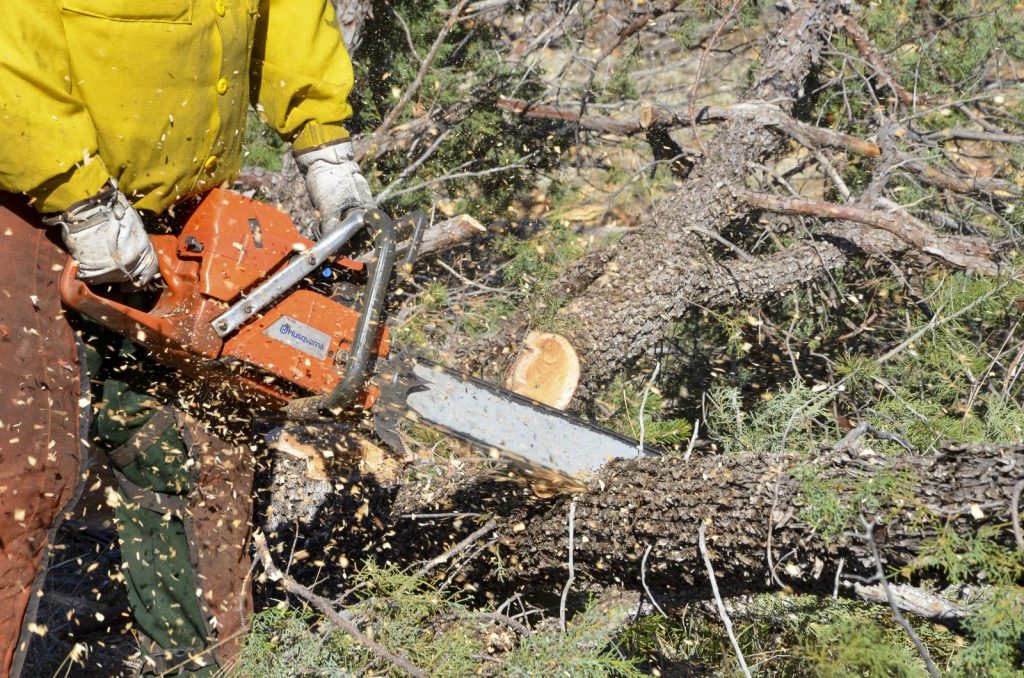
Towne, G., and P. D. Ohlenbusch. 1992. Rangeland Brush Management. MF-1021. 4. Manhattan, KS: Kansas State University Agricultural Experiment Station and Cooperative Extension Service. https://www.bookstore.ksre.ksu.edu/Item.aspx?catId=226&pubId=524.
This extension bulletin from Kansas State Research and Extension describes how to remove trees and brush from rangeland to increase forage production and livestock carrying capacity. Considerations for management practices that can help in managing rangeland brush are provided: prescribed burning, mechanical removal, herbicides, and grazing management. The bulletin emphasizes that brush management is important for properly managing rangeland, and the key is to control potential problems before they become severe.
USDA NRCS. 2016. Brush Management. Conservation Practice Standard 314. 4. Washington, D.C.: USDA. https://www.nrcs.usda.gov/Internet/FSE_DOCUMENTS/stelprdb1254946.pdf.
In this USDA NRCS conservation practice standard, brush management is defined as the removal or management of woody plants including those that are invasive or noxious. The standard includes additional information on the purpose of brush management, the criteria and conditions where it applies, considerations, plans and specifications, and operation and maintenance. The URL offers a direct download of a PDF of this resource.
Range Planting
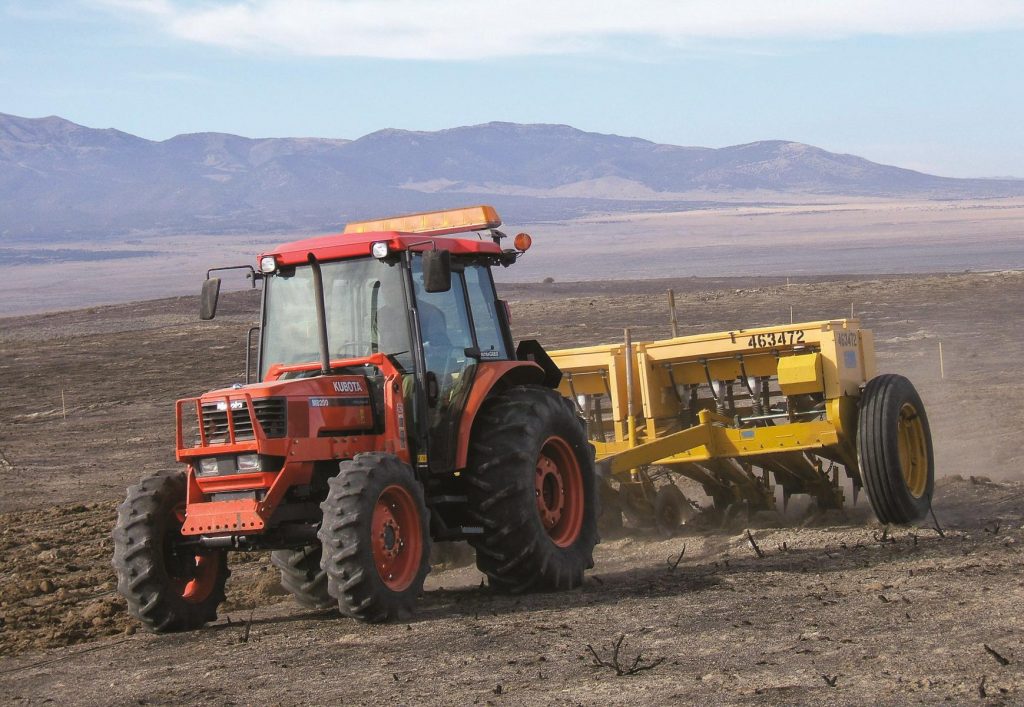
Ohlenbusch, P. D. 1997. Establishing Native Grasses. 4. Manhattan, KS: Kansas State University Agricultural Experiment Station and Cooperative Extension Service. https://www.bookstore.ksre.ksu.edu/Item.aspx?catId=226&pubId=838.
This extension bulletin from Kansas State Research and Extension outlines considerations for establishing native grasses. Topics covered include planning for seeding, soils, seedbed preparation, seeding method, origin and quality of seed, seeding rates, seeding dates, fertilization, management during establishment, weed control, and management after establishment. A list of associated extension bulletins from Kansas State Research and Extension is included at the end.
USDA NRCS. 2010. Range Planting. Conservation Practice Standard 550. 3. Washington, D.C.: USDA. https://www.nrcs.usda.gov/Internet/FSE_DOCUMENTS/stelprdb1046903.pdf.
In this conservation practice standard, the USDA NRCS defines range planting as establishing adapted or self-sustaining vegetation like forbs, legumes, grasses, and trees and shrubs. The standard outlines purposes of range planting, along with additional information on conditions and criteria where the conservation practice applies, considerations, plans and specifications, and operation and maintenance. The URL offers a direct download of a PDF of this resource.
USDA NRCS. 2017. Range Planting. Conservation Practice Standard Overview 550. 1. Washington, D.C.: USDA. https://www.nrcs.usda.gov/Internet/FSE_DOCUMENTS/stelprdb1255138.pdf.
In this conservation practice standard overview, the USDA NRCS defines range planting, then provides a concise summary of the conservation practice. A list of commonly associated conservation practices include brush management, grazing land mechanical treatment, prescribed burning, and prescribed grazing. The URL offers a direct download of a PDF of this resource.
Silvopasture Establishment
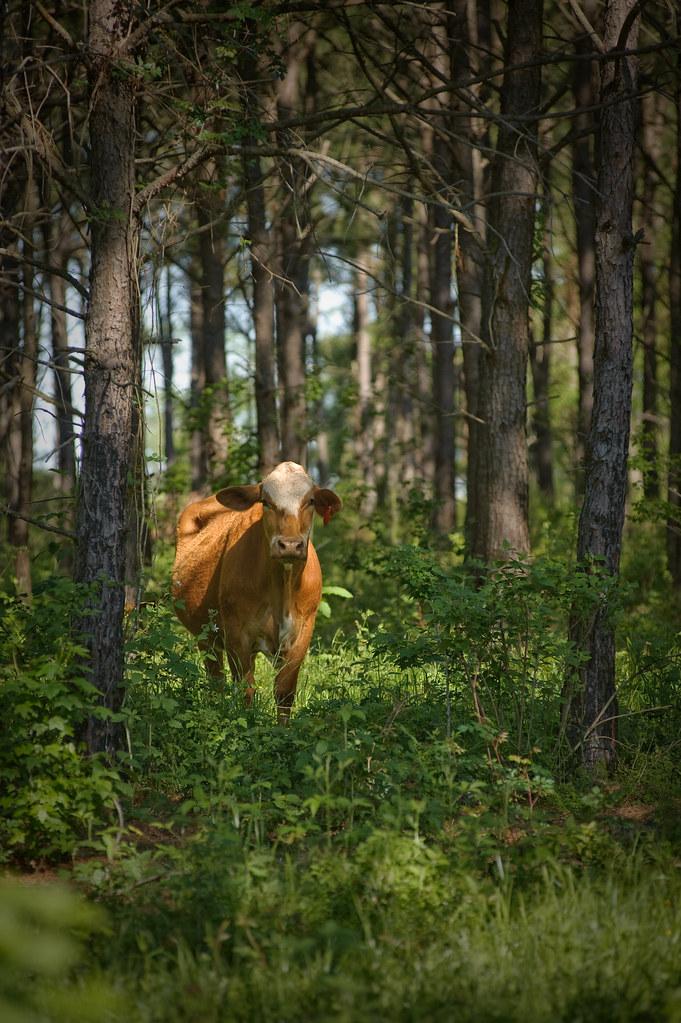
USDA National Agroforestry Center. 2019. Silvopasture. https://www.fs.usda.gov/nac/practices/silvopasture.php.
This web page from the USDA National Agroforestry Center defines silvopasture as “the integration of trees and livestock grazing on the same land.” The page also provides a concise summary of the practice, including some of the benefits. Links to additional resources are provided, including information sheets, brochures, agroforestry notes, and other resources. Links to an agroforestry continuing education course and agroforestry photos are also included.
USDA NRCS. 2016a. Silvopasture. Conservation Practice Standard 381. 5. Washington, D.C.: USDA. https://www.nrcs.usda.gov/wps/PA_NRCSConsumption/download?cid=stelprdb1255015&ext=pdf.
The USDA NRCS defines silvopasture as establishing trees and compatible forages on the same acreage in this conservation practice standard. The standard lists the purposes of silvopasture, states the conditions for where the practice applies, criteria for implementation, considerations, plans and specifications, and operation and maintenance. The URL offers a direct download of a PDF of this resource.
USDA NRCS. 2016b. Silvopasture. Conservation Practice Standard Overview 381.1. Washington, D.C.: USDA. https://www.nrcs.usda.gov/wps/PA_NRCSConsumption/download?cid=nrcseprd1053019&ext=pdf. The URL offers a direct download of a PDF of this resource.
This standard on the conservation practice of silvopasture defines silvopasture and provides a concise summary of the conservation practice. Conservation practices commonly associated with silvopasture establishment are listed, including tree/shrub preparation, forest stand improvement, tree/shrub establishment, tree/shrub pruning, forage and biomass planting, range planting, prescribed grazing, grassed waterway, and upland wildlife habitat management. The URL offers a direct download of a PDF of this resource.
Wildlife Habitat Planting and Management
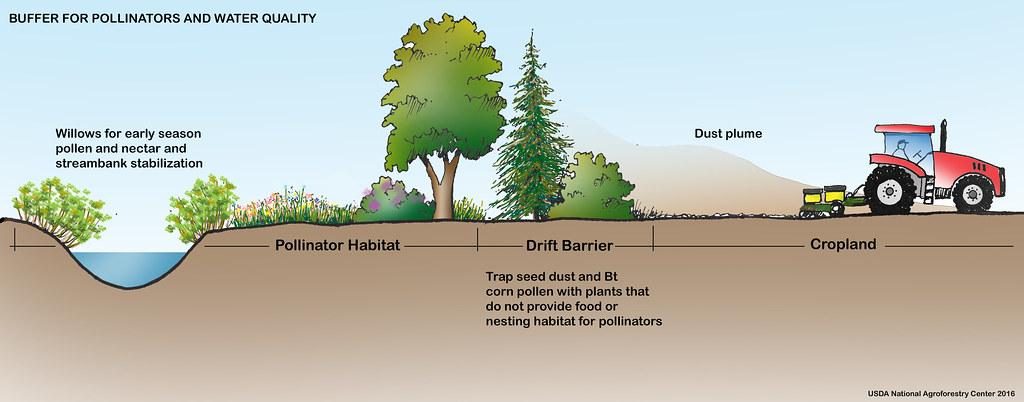
USDA National Agroforestry Center. 2019. Wildlife and Pollinators. https://www.fs.usda.gov/nac/topics/wildlife-pollinators.php.
This web page from the USDA National Agroforestry Center provides a concise summary of the role agroforestry can play in providing wildlife habitat for wildlife and pollinators. Links to additional resources are provided, including information sheets, brochures, agroforestry notes, and other resources.
USDA NRCS. 2010. Upland Wildlife Habitat Management. Conservation Practice Standard 645. 2. Washington, D.C.: USDA. https://www.nrcs.usda.gov/Internet/FSE_DOCUMENTS/nrcs143_025754.pdf.
The USDA NRCS defines upland wildlife habitat management as the practice of providing upland habitats and connectivity for wildlife within the landscape. The standard lists the purposes of upland habitat management, the conditions for the practice, criteria for implementation, considerations, plans and specifications, and operation and maintenance. The URL offers a direct download of a PDF of this resource.
USDA NRCS. 2012. Upland Wildlife Habitat Management. Conservation Practice Standard Overview 645. 1. Washington, D.C.: USDA. https://www.nrcs.usda.gov/Internet/FSE_DOCUMENTS/stelprdb1255212.pdf.
This conservation practice standard overview defines upland wildlife habitat management and provides a concise summary of the conservation practice. Conservation practices commonly associated with upland wildlife habitat management are listed, among them watering facility, restoration and management of rare or declining habitats, and use exclusion.
USDA NRCS. 2019a. Fish and Wildlife Habitat Leaflets. https://www.nrcs.usda.gov/wps/portal/nrcs/detail/national/plantsanimals/fishwildlife/pub/?cid=nrcs143_022362.
This web page includes links to wildlife habitat leaflets developed for many different animals and ecosystems. Each were developed in partnership with the Wildlife Habitat Council and are downloadable.
USDA NRCS. 2019b. Plants & Animals. https://www.nrcs.usda.gov/wps/portal/nrcs/main/national/plantsanimals/.
This USDA NRCS web page provides links to various plant and animal resources from the USDA and NRCS such as the PLANTS database.
USDA NRCS. 2019c. Wildlife Habitat Planting. Conservation Practice Standard 420. 5. Washington, D.C.: USDA. https://www.nrcs.usda.gov/wps/PA_NRCSConsumption/download?cid=nrcseprd1460023&ext=pdf.
The USDA NRCS defines wildlife habitat planting as the practice of “establishing wildlife habitat by planting herbaceous vegetation or shrubs.” The standard lists the purposes of wildlife habitat planting states the conditions for where the practice applies, criteria for implementation, considerations, plans and specifications, and operation and maintenance. The URL offers a direct download of a PDF of this resource.
USDA NRCS. 2019d. Wildlife Habitat Planting. Conservation Practice Standard Overview 420. 1. Washington, D.C.: USDA. https://www.nrcs.usda.gov/wps/PA_NRCSConsumption/download?cid=nrcseprd1460023&ext=pdf.
This conservation practice standard overview defines upland wildlife habitat planting and provides a concise summary of the conservation practice. Practices commonly associated with wildlife habitat planting are listed and include herbaceous weed treatment, brush management, fence, and prescribed burning.
USDA NRCS Iowa. 2018. Iowa Native Prairie Planting Guide. 4. Des Moines, IA: USDA NRCS. https://www.nrcs.usda.gov/wps/cmis_proxy/https/ecm.nrcs.usda.gov%3a443/fncmis/resources/WEBP/ContentStream/idd_104EFC65-0000-C910-9983-4690C75DDB74/0/NativePlantingEst%26Mgmt.pdf.
This USDA NRCS publication covers establishing native prairie and managing native plantings. The focus is Iowa, but the information is relevant to other parts of the US. The guide includes directions for establishing native prairie plantings, controlling weeds after planting, prescribed burning, and haying and mowing. The guide emphasizes certain practices by years since establishment (first through third year and beyond). A burn schedule is provided for the state of Iowa, though these dates may vary for other regions. Other considerations are also described, such as control of Canada thistle and introduced grasses.

